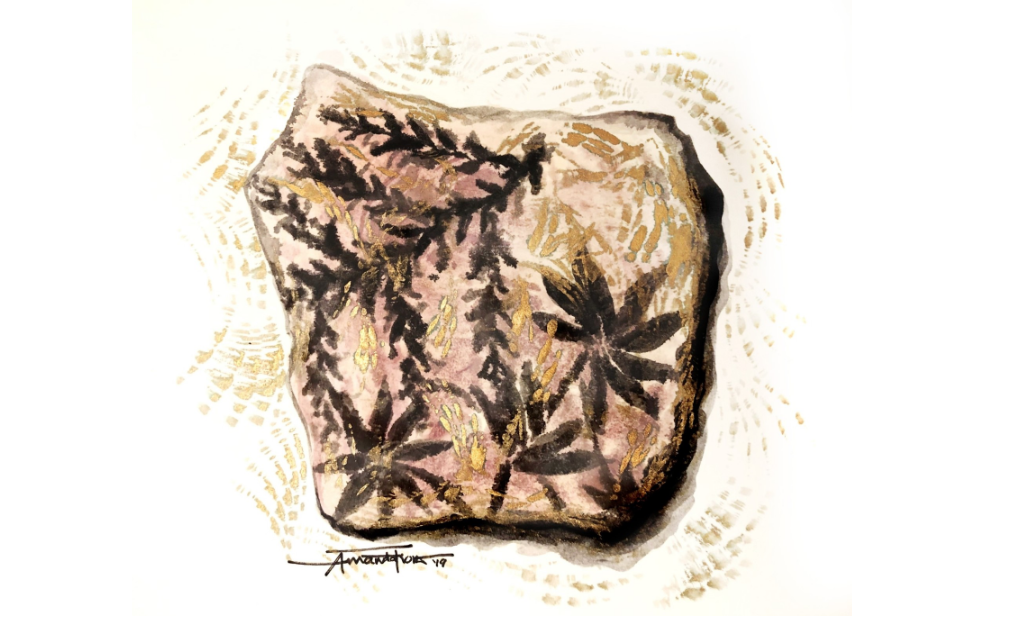Paleontology has long offered scientists insight into the mysteries of prehistory. Through excavations of colossal skeletons, petrified insects, and fossilized plants, researchers can uncover what life looked like long ago.
Despite the extensive study of animals from the Cretaceous period, which stretched from 145.5 million years ago to the dinosaur extinction 65.5 million years ago, little is known about the climate of this time, especially in regions of eastern Canada. Researchers at the McGill Redpath Museum have taken a different approach to filling in these gaps in knowledge, using paleobotany, the study of fossilized plants.
“The fossil record is rich in assemblages of fern, angiosperm, and conifer leaves that offer clues about the plant diversity of past ecosystems,” Alexandre Demers-Potvin, a graduate student and 2018 National Geographic Explorer, wrote in an email to The McGill Tribune. “Not only do fossil plants offer a glimpse of the vegetation of past landscapes, but some of them […] can be used to predict the climate of that past landscape.”
This past summer, Demers-Potvin, the lead author of a recent study on paleoclimate reconstruction, and a team of researchers under the supervision of Professor Hans Larsson, director of the Redpath Museum, headed to Schefferville, a town near the Quebec-Labrador border. Among the researchers were Noemie Sheppard, an undergraduate student in Environment, and Michel Chartier and Mario Cournoyer, co-founders of Montreal’s Musée de paléontologie et de l’evolution (MPE), which also supported the study. They centred their analysis on insect fossils and angiosperm, or flowering plant, specimens from the region, known as the Redmond flora.
Among the ruins of an abandoned mine, the team found remnants of angiosperms preserved in sedimentary rock, which served as their first clue to what environmental conditions were like in the Late Cretaceous. The composition of the rocks and the fossils’ broad leaves suggest that they formed at the bottom of a lake surrounded by a forest.
Demers-Potvin and Larsson discovered that Schefferville experienced an average yearly temperature of 13 to 17 degrees Celsius during the Late Cretaceous. Although this would have been on the cooler side for North America at the time, the creatures there would have enjoyed moderate humidity and hot summers.
Remarkably, this data was extracted from plant leaves. Since flowering plants of the Cretaceous are anatomically similar to ones today, the researchers can extrapolate climate information from the fossilized plants in the same way that they can deduce this information from modern-day plants. Demers-Potvin and his team derived elements of the bygone environment using a tool called Climate Leaf Analysis Multivariate Program (CLAMP) .
“[CLAMP] rests on the premise that some anatomical traits in leaves are correlated to some climate parameters [such as] temperature [or] precipitation,” Demers-Potvin wrote.
As a system of data analysis, CLAMP uses a scoring method to track the ways in which modern plants adapt to their environment. Referencing fossil records, it then works backward to associate the same traits in older plants to their potential environmental context. The results can be used to understand the effects that drastic climate change had on species thousands of years ago, and how this translates to potential effects on species in today’s climate crisis.
In addition to sampling with CLAMP, the research team unearthed 15 new plant species that were previously unknown to the region. Surprisingly, the taxonomic record of the Redmond flora had not been measured in any meaningful capacity since the 1960s.
Beyond the Creataceous explorations led by Demers-Potvin, who aims to continue the team’s research with insect fossils found in Schefferville, Larsson is overseeing multiple evolutionary field projects, ranging from studies of alligators off the coast of Mexico to Dinosaur Provincial Park in Alberta. Larsson thanked the Redpath Museum for allowing researchers to explore diverse interests.
“None of this would be possible without the Redpath Museum,” Professor Larsson said. “You’re not siloed in here.”









